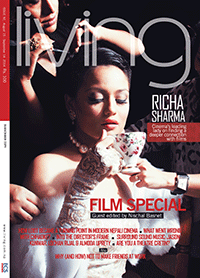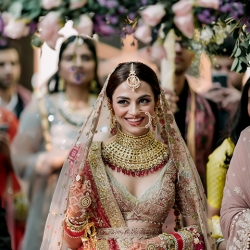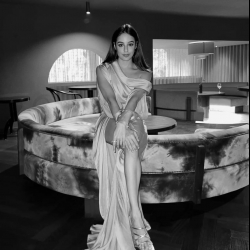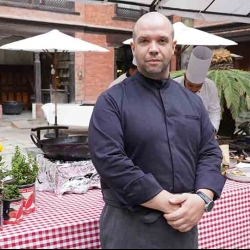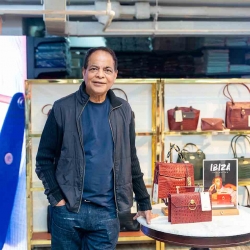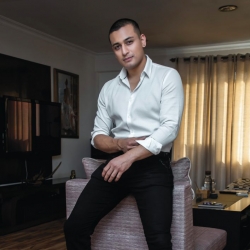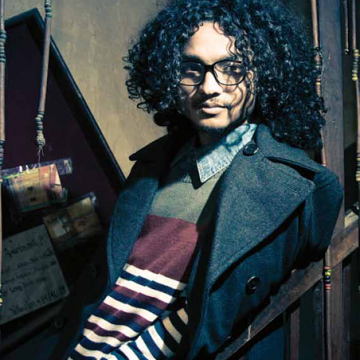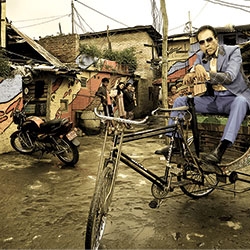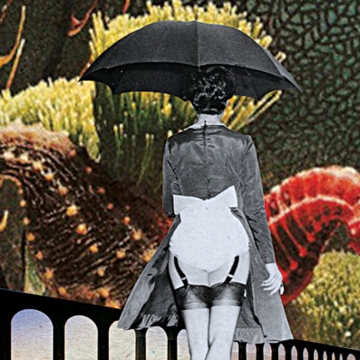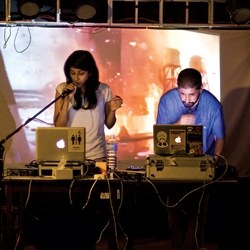A picture can speak a thousand words but what if art could read the hearts of millions? Sahara Shrestha’s graphic art, with its manipulation of pictures depict a meaningful reality, a beautiful medium which Shrestha takes from art house cinemas, imageries and other visual mediums.
Shrestha’s ‘Girls’ collection reflects her imagination on how a girl is portrayed in society along with the aspiration of girls. Her simple use of different pictures to create abstract art shows the dynamics of being a girl.
Why did you come up with the ‘Girls’ series? What was your motivation and what does it portray?
It all started with the image of a girl with wolf teeth and the girl walking with an umbrella. It’s fascinating how artists have always been captivated by the female form so when I found those pictures, I decided to make something out of them. I wondered what would happen if I turned it into something bizarre. Adding a wolf’s mouth and a heart drastically changed the image. I’ve also borrowed characters from movies. It’s interesting to play with men’s perception of women and to place them in a different context to convey a different meaning or to even recreate that imagining of girls in a different way.
What kind of response are you looking forward to?
I’m not expecting a particular kind of reaction but I like it when my art leads to discussion or at least a thought regarding the subjects. I may read my works one way, but another viewer may see it differently.
How do you work on a design? What inspires you ?
I just go for it. I don’t do sketches or make concrete plans prior to making my pieces unless it’s a design for somebody else’s project. I’ll get a vague idea and start building on it on the computer where I keep moving things around the screen, changing colors, textures, scale, frames, and pair-ups until I’m satisfied with the overall feeling and quality of the image. Visually, I like things to be stylistic or striking. I’ve always been interested in art, though my early exposure to art was from movies and photographs. I started collecting postcards, magazine clippings, I used to love my sister’s drawings. To name more people who inspire me artistically: Jean-Luc Godard, William Klein, Alexis Dos Santos, Francois Truffaut, Robert Rauschenberg, John Baldessari, Ellen Gallagher. The internet in general is a treasure trove.
What is the scenario of Graphic art in Nepal?
Its popularity as an art form amongst Nepali artists seems new. Much of Nepali art still conforms to traditional forms but I’m glad to see more people engaging and excelling. Kripa Joshi is doing great graphic fiction. I remember in art class they taught us how to draw to scale and things like that. Mostly, we tried to replicate real-life images, and one of our major projects was drawing thankas. I can understand Nepali schools wanting to encourage engagement in an old art form. It’s a tradition to take pride in, but to me, that alone and doing real life drawings didn’t feel like learning new ways of expressing and communicating. I haven’t been to Nepal in a while and have lost touch with how things are now but reading up about events and watching YouTube videos of things like rap battles, it’s astonishing how Kathmandu really is moving with the world these days.
When did your interest in Graphic arts begin? And how did you go about it? What led you to pursue a career in Graphic arts?
I’ve been interested in graphic arts since I was young. A lot of my interest comes from my love for visuals in art house, cinema etc. The French new wave is my favorite and some Czech new wave too. But even mainstream classics like Funny Face have great imagery, from costume to makeup to set design. Details in visual composition are what I find inspiring.

